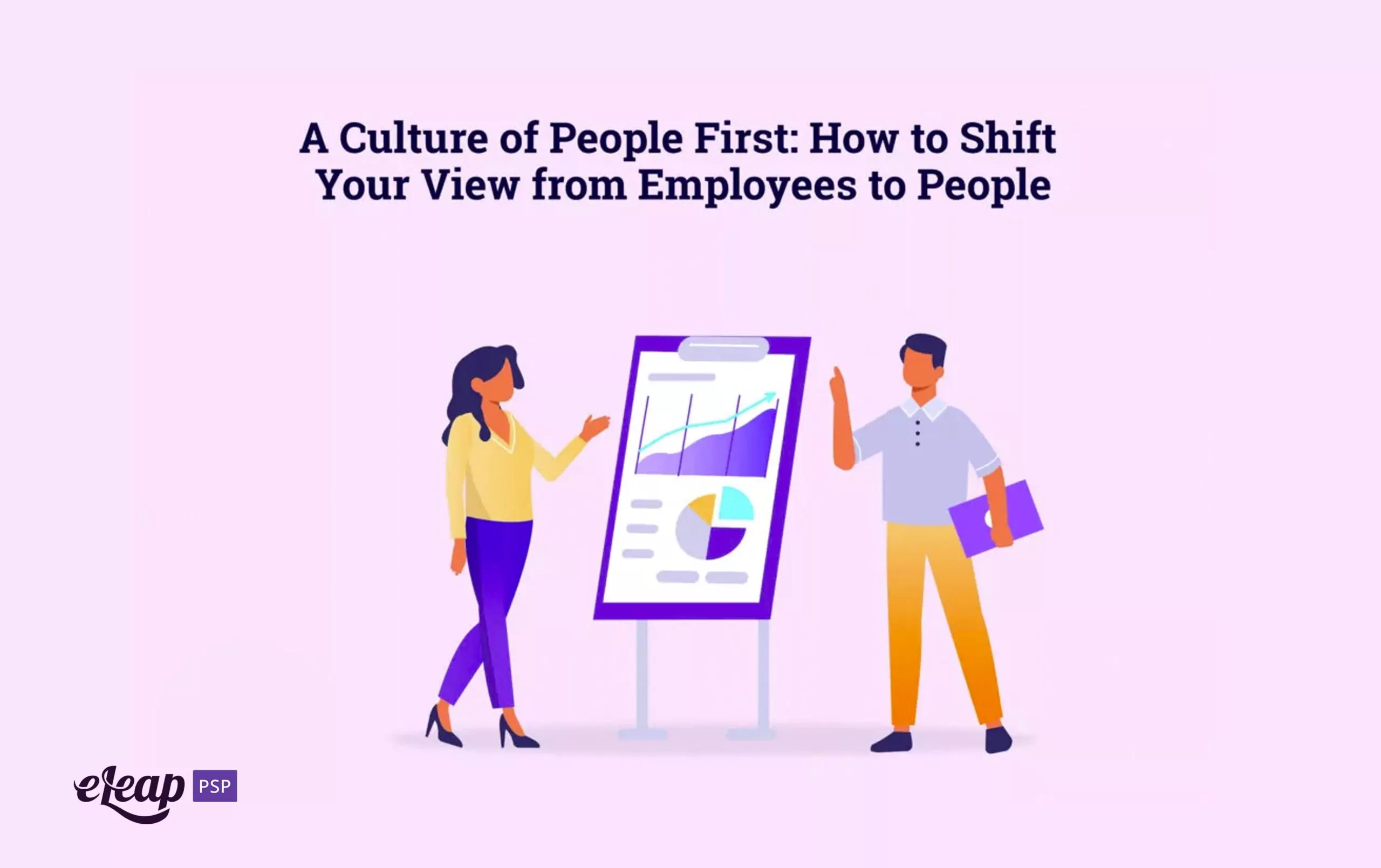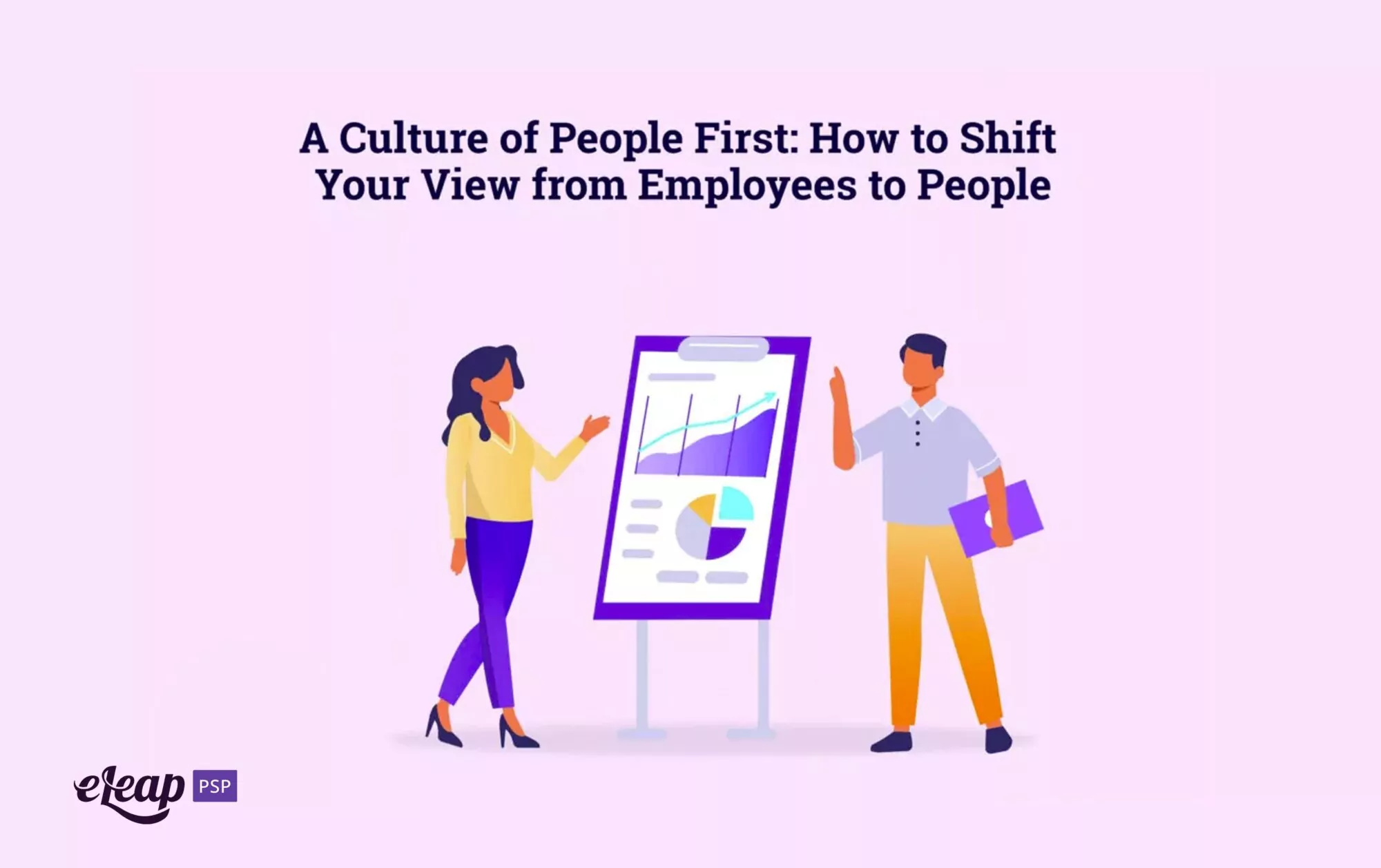A Culture of People First: How to Shift Your View from Employees to People

Employees are people. That seems pretty obvious. However, too many organizations (and individual managers and leaders within those organizations) see them as somewhat less.
They’re employees. Business assets. Potential liabilities.
This has a dehumanizing effect that carries over into the workplace. It becomes easy to see your team members as a resource to be managed, rather than people with their own goals, dreams, aspirations, and struggles. That type of negative corporate culture won’t make you an employer of choice.
It prevents your organization from realizing its true greatness. The good news is that it’s possible to change things. You can shift from seeing your team members as employees to seeing them as people.

Bake It In from the Beginning
Perhaps the most important consideration here is that you bake in the idea that your teams are made up of people, not employees, from the very beginning. Of course, existing companies can’t go back in time, but you can begin to reinvent your culture, changing something negative and potentially toxic into something that lifts up, encourages, and values the human element. With that being said, it’s all too easy to say you value people and not employees but only pay lip service to that lofty ideal.
Without action, words are empty. So, how do you get that culture revved up and running? It’s all about how you support and nurture it.
Look at Your Benefits
One place to start your assessment is with the benefits that you offer your people. Are they “people-focused” or are they ultimately business focused? For instance, a company that focuses on employees might offer limited PTO. After all, at some point you hit the wall, right? Your investment in those employees begins to yield lower and lower returns and eventually they become a drain on your resources, rather than an asset that supports business success.
That right there – that’s a sign that you’re looking at your team members as employees and not people. However, offering team members unlimited PTO tells them that you value them as individuals, and not just for what they bring to the table. It also tells them that you understand that things happen in life and you’re empowering them to deal with those crises, large and small, without worrying that it’s going to compromise their jobs.
Another example would be your parental leave policy. Do you follow the bare minimum amount of leave mandated by the government? If so, your culture focuses on employees and not on people. There is nothing more important in a person’s life than the day they become a parent. By offering more than the bare minimum amount of parental leave (for both new moms AND dads), you set yourself apart from a huge percentage of employers, but you also show that you understand what matters in life (people not profit).
You should also look at how you support your team members. Do you provide learning and development opportunities to help them accelerate their career? If so, that’s great. You’re doing more than many companies. However, it’s not the end of the path. Some other options to consider include:
- Support for remote work when possible, which leads to greater autonomy and self-confidence.
- Support for your people to find more work/life synergy through meaningful responsibilities that connect with their value and ethics.
- Support for your team members to learn the life skills necessary to be happier, healthier, and less affected by physical, emotional, and mental stress.
Rewards That Really Matter
All companies offer rewards for outstanding performance. They also offer some form of recognition when a team member reaches a milestone anniversary with the firm (one-year, two-year, three-year anniversaries, etc.). Sadly, most companies miss the boat.
Your rewards and recognition methods could be amazing ways to show that you value your team members as people. Sadly, they’re too often missed opportunities. You probably offer a pittance in terms of monetary incentives – a meaningless nod to a valuable achievement.
Instead, offer something of value. For instance, does your company value protecting the natural environment? If so, reward employees on their anniversary with something that speaks directly to that, such as clothing from Patagonia or REI (companies well-known for not just their outdoor gear, but their stance toward protecting people and the planet).
When someone reaches a meaningful milestone with the company (say five years), reward them with a significant amount of paid time off for the explicit purpose of disconnecting and spending time with family – a four-week vacation or sabbatical is a great example here. You should also allow the employee to take that time off consecutively, rather than forcing them to find four individual weeks during the year.
Build Your Team Strategically
When team members have to wear too many hats, it erodes productivity. However, it also leads to personal frustration and a sense of increased futility. Building your team strategically ensures that each person can do what they do best without being forced into multiple, sometimes conflicting, roles at the same time.
Building your team strategically also provides you with a way to help your people grow and develop. Work with them to chart a career path. Invest in their success with learning and development courses to help them learn new skills and master new information. Doing so increases their loyalty, but also improves satisfaction, while drives morale, productivity, and so much more.
Check-Ins and One-on-Ones
Finally, make sure you’re following the right performance management methodology. Regular check-ins and one-on-ones should replace those outdated annual performance reviews. Sit-down discussions between two people yield significantly better results than punitive reviews that focus solely on impersonal metrics.
Create a Culture of Success
While your company’s culture might not measure up to what we’ve outlined above, the good news is that you can change things for the better. It requires intentionality, strategy, and dedication, but there’s no reason you cannot shift from seeing your team members as employees to seeing them as real people.